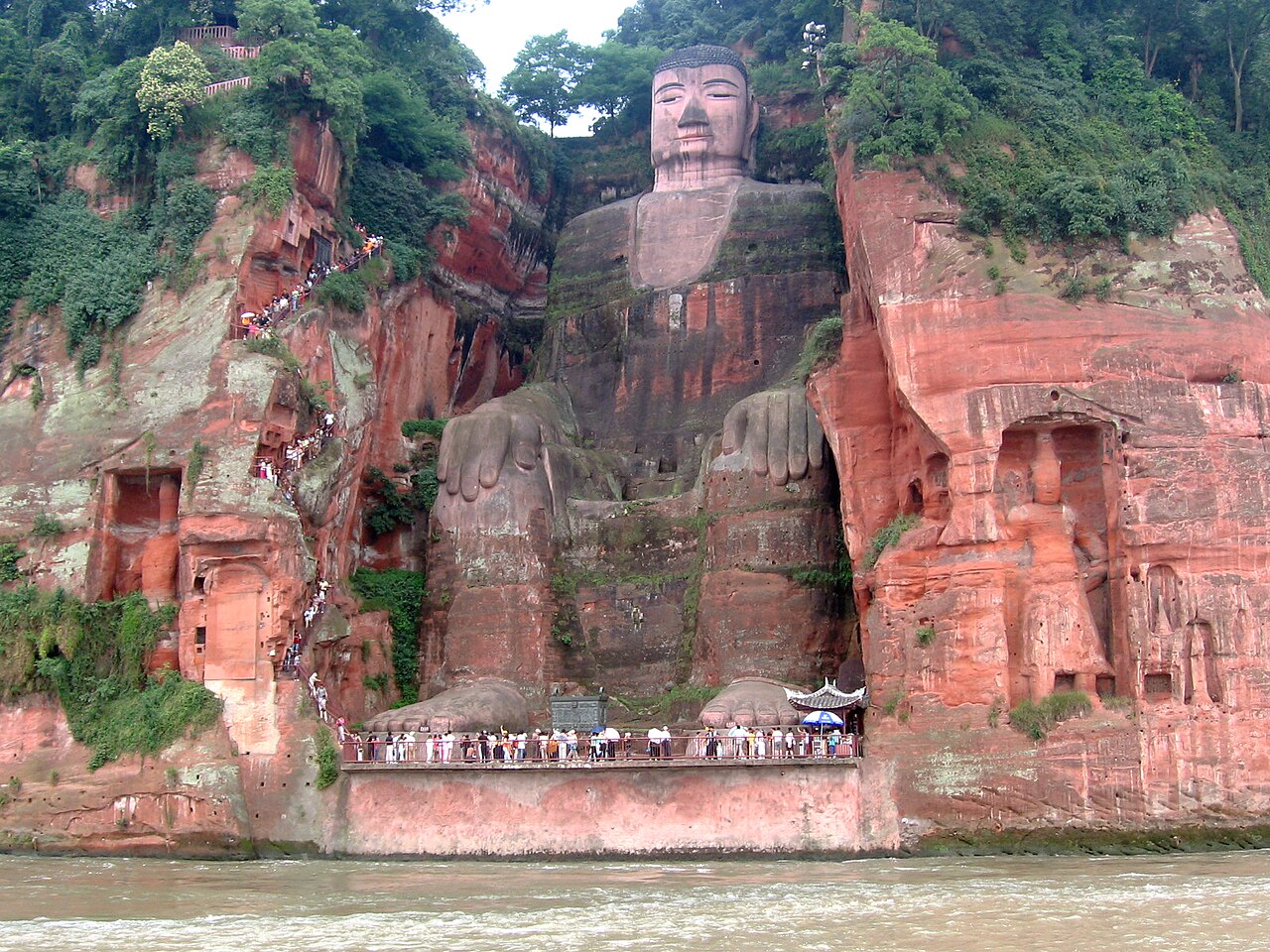 Introduction
Introduction
The Leshan Giant Buddha, located in Sichuan Province, China, is the largest stone Buddha statue in the world and one of the most iconic symbols of Chinese culture and spirituality. Standing at 71 meters (233 feet) tall, this colossal figure of Maitreya Buddha was carved directly into a cliff overlooking the confluence of three rivers—the Min River, Dadu River, and Qingyi River.
Recognized as a UNESCO World Heritage Site since 1996, the Leshan Giant Buddha attracts millions of visitors each year who come to admire its grandeur, history, and breathtaking natural setting.
History of the Leshan Giant Buddha
Construction of the Leshan Giant Buddha began in 713 CE, during the Tang Dynasty, under the leadership of a monk named Haitong.
-
Haitong believed that building the Buddha would calm the turbulent waters that caused dangerous flooding at the rivers’ meeting point.
-
Thousands of workers spent 90 years carving the statue into the cliff face.
-
After Haitong’s death, the project was completed by his disciples with funding from local officials.
The result was not only a magnificent spiritual monument but also an ingenious solution to managing the river currents.
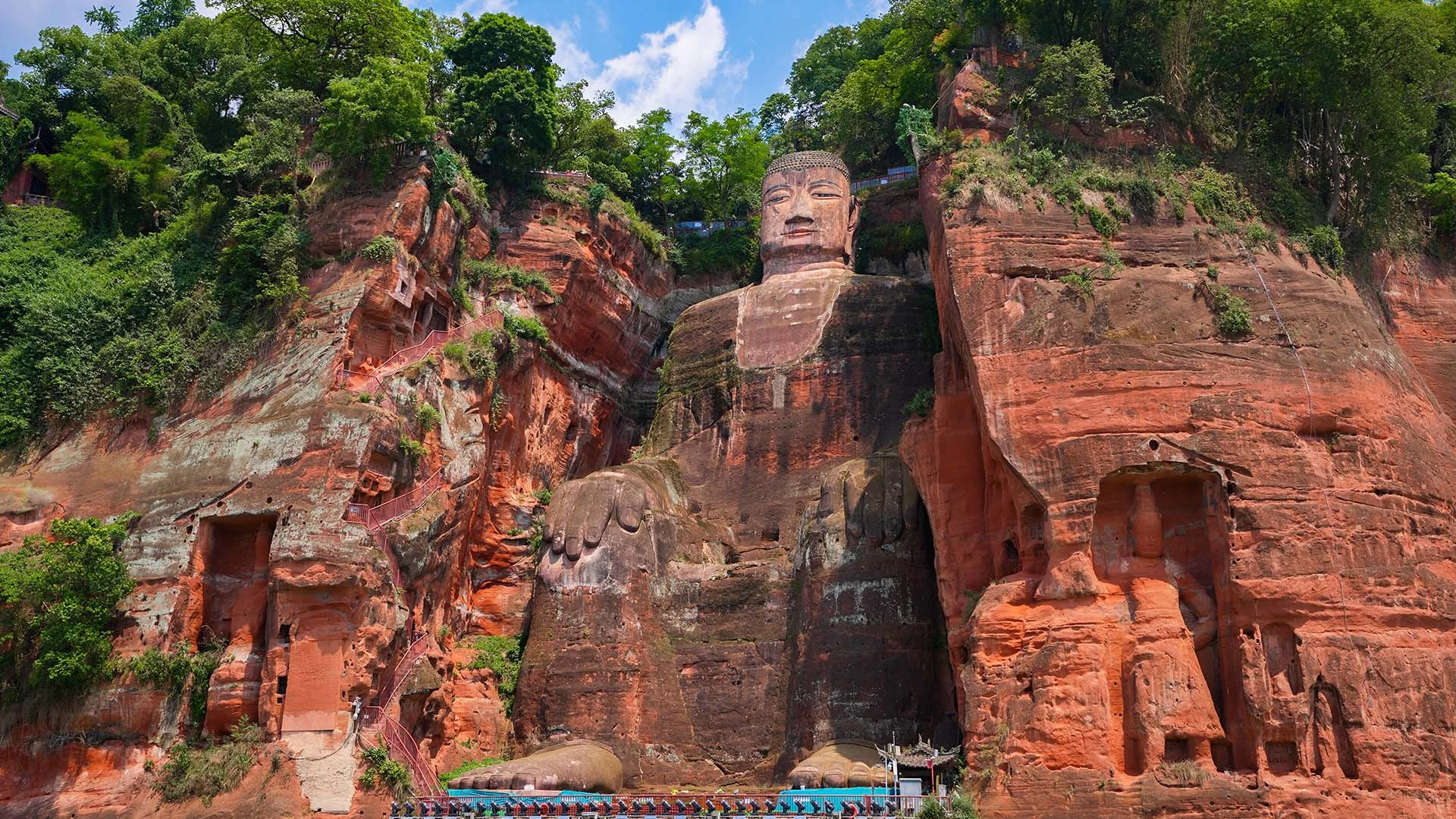 Architecture and Design of the Buddha
Architecture and Design of the Buddha
-
Height: 71 meters (233 feet)
-
Shoulder Width: 28 meters (92 feet)
-
Head Height: 14.7 meters (48 feet)
-
Ear Length: 7 meters (23 feet)
-
Finger Length: 8.3 meters (27 feet)
The Buddha depicts Maitreya, the future Buddha, sitting with hands resting on knees and a calm, meditative expression.
An advanced drainage system was built into the statue, with hidden gutters and channels to prevent rainwater from eroding the rock—a remarkable feat of Tang Dynasty engineering.
Spiritual and Cultural Significance
The Leshan Giant Buddha is not just an engineering marvel but also a spiritual icon. It represents peace, protection, and prosperity. For centuries, it has been a pilgrimage site for Buddhists and a cultural treasure symbolizing the harmony between humans, nature, and spirituality.
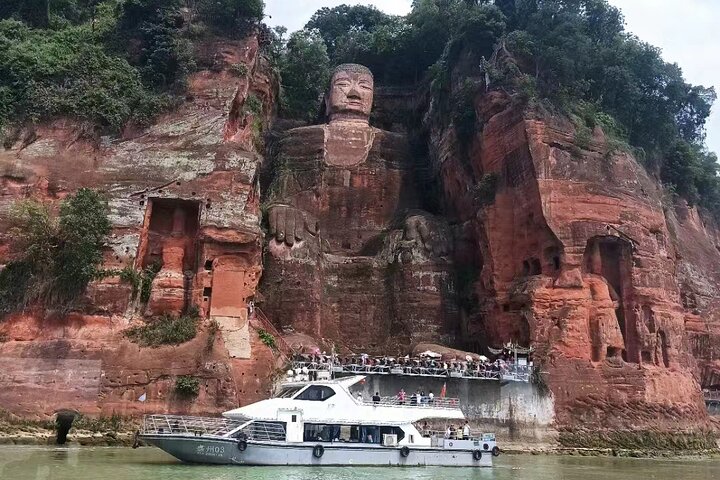 Visiting the Leshan Giant Buddha
Visiting the Leshan Giant Buddha
Location
-
Situated in Leshan City, Sichuan Province, about 120 km (75 miles) from Chengdu, the capital of Sichuan.
Opening Hours
-
April to October: 7:30 AM – 6:30 PM
-
November to March: 8:00 AM – 5:30 PM
Ticket Prices
-
Adults: ¥80–90 (varies by season)
-
Discounts for students, children, and seniors.
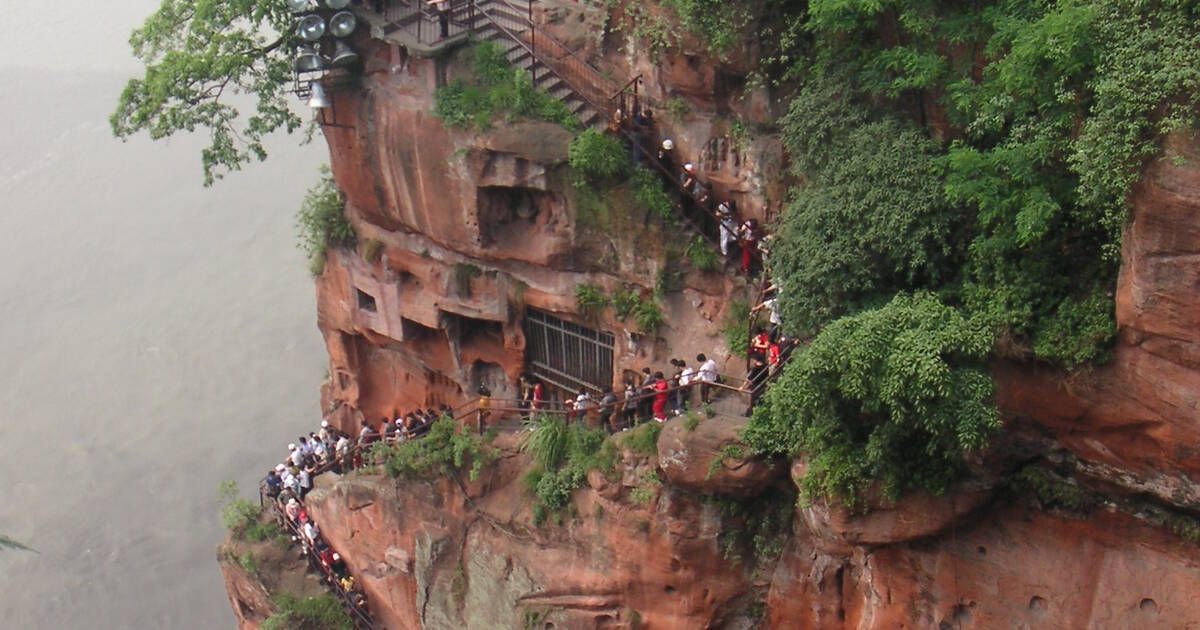 Best Ways to Explore the Leshan Giant Buddha
Best Ways to Explore the Leshan Giant Buddha
1. Hiking Path
Visitors can hike along the scenic paths, starting from the top of the statue’s head and descending down narrow stairways to view the Buddha’s massive feet.
2. River Cruise
A boat ride on the Min River offers the best panoramic view of the Buddha. From the water, visitors can truly appreciate the statue’s towering presence against the cliff.
3. Lingyun Temple
Located behind the Buddha, Lingyun Temple offers insight into local Buddhist traditions and additional smaller statues.
4. Wuyou Temple
Another important temple nearby, surrounded by ancient architecture, cultural relics, and tranquil gardens.
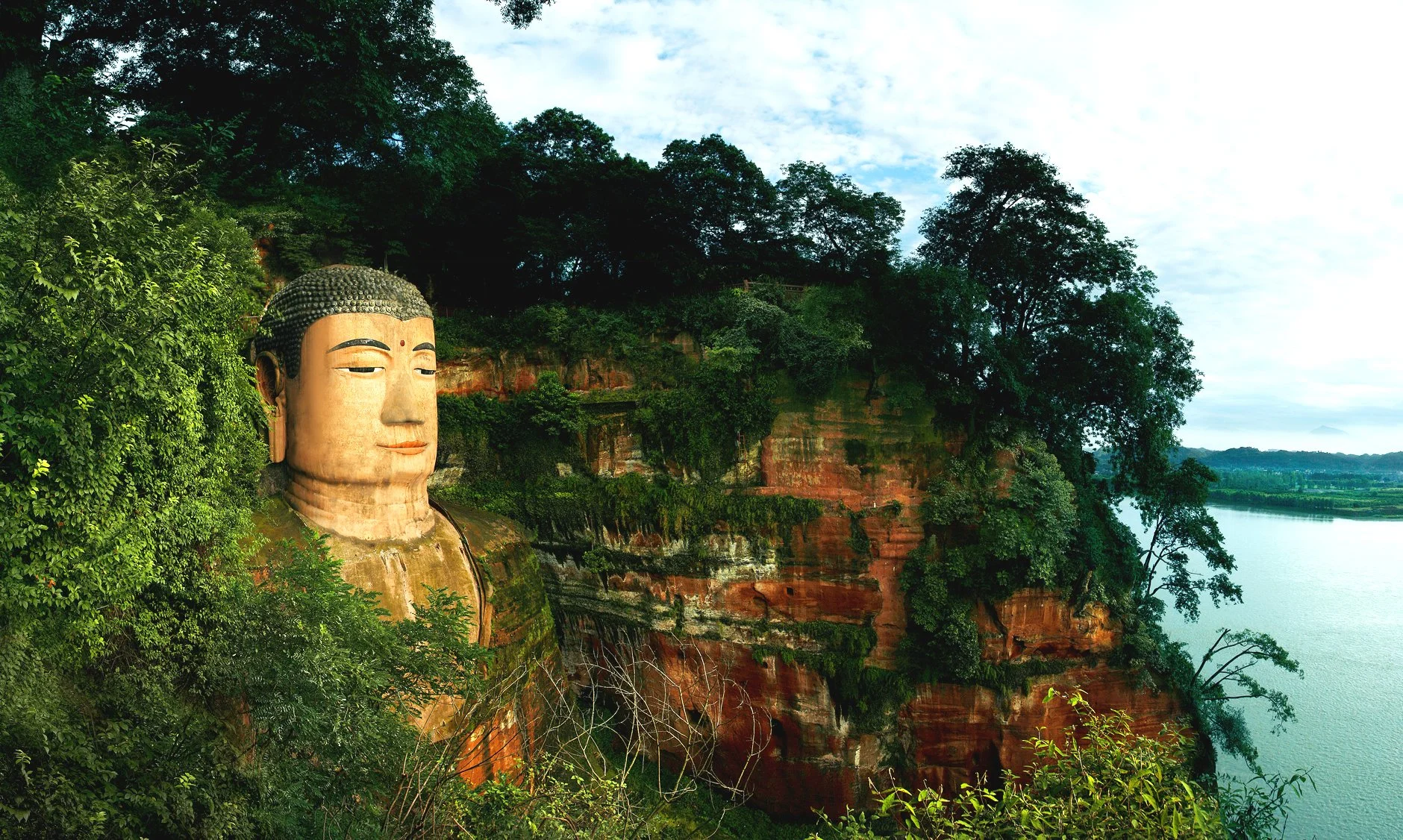 Best Time to Visit the Leshan Giant Buddha
Best Time to Visit the Leshan Giant Buddha
-
Spring (March–May) – Comfortable temperatures and blooming scenery.
-
Autumn (September–November) – Clear skies and fewer crowds.
-
Summer can be hot and humid, while winter is cooler but less crowded.
How to Reach Leshan Giant Buddha
-
From Chengdu:
-
By Train: High-speed train from Chengdu East Railway Station to Leshan (1 hour).
-
By Bus: Buses from Xinnanmen Bus Station in Chengdu to Leshan (2 hours).
-
By Car/Taxi: Around 2 hours via expressway.
-
-
From Leshan City Center: Local buses or taxis take around 20 minutes to reach the scenic area.
Nearby Attractions
-
Mount Emei (Emeishan) – Another UNESCO World Heritage Site, famous for Buddhist temples and natural beauty.
-
Leshan City – Known for Sichuan cuisine and traditional culture.
-
Oriental Buddha Park – Features hundreds of Buddhist statues and carvings.
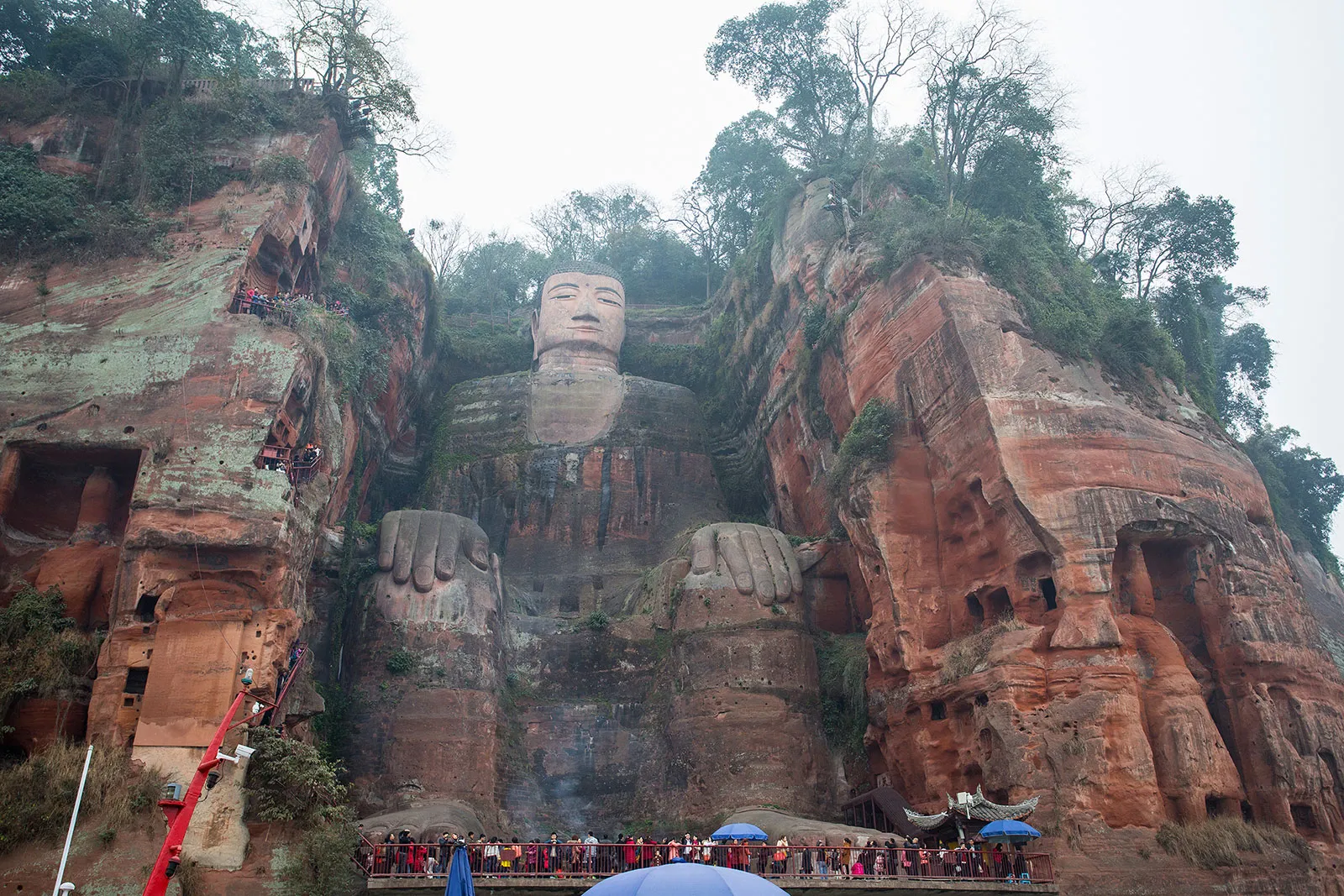 Travel Tips for Visitors
Travel Tips for Visitors
-
Arrive Early to avoid large crowds.
-
Wear Comfortable Shoes – Stairs are steep and can be slippery.
-
Choose Boat Tours for the best photo opportunities.
-
Respect Local Customs – Many visitors are pilgrims; dress modestly.
-
Check Weather Forecasts – Rain can make climbing paths difficult.
-
Combine with Mount Emei for a complete cultural and spiritual journey.
Fun Facts About the Leshan Giant Buddha
-
It is the largest stone-carved Buddha in the world.
-
Legend says, “The mountain is a Buddha, and the Buddha is a mountain.”
-
The statue’s toenails are large enough for a person to sit on.
-
The drainage system designed over 1,200 years ago is still effective today.
-
The Buddha faces Mount Emei, symbolizing a spiritual connection.

You must be logged in to post a comment.